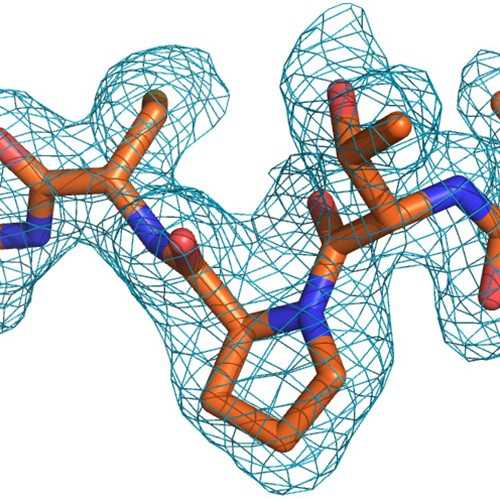Heat-Labile Enterotoxin (HLT) LT-IIc
Type II heat-labile enterotoxin, LT-IIc, from Escherichia coli was produced recombinantly in E. coli and purified to homogeneity using a combination of nickel affinity and gel filtration chromatography.
LT-IIc is a type II heat-labile enterotoxin produced by certain strains of Escherichia coli. LT-IIc binds to gangliosides GM1, GM2, GM3, and GD1a, but has no detectable binding activity for GD1b, GQ1b, and GT1b, three gangliosides which are avidly bound by LT-IIa, another type II heat-labile entertoxin. LT-IIc binds to GM1, a ganglioside also bound by cholera toxin, a type I heat-labile enterotoxin, and by LT-IIa, but not by LT-IIb, the third member of the type II heat-labile enterotoxin family. The molecule induces high levels of cAMP in the cell upon intoxication. The enterotoxin is also a very strong mucosal and systemic adjuvant when administered by intranasal or intradermal routes.
From the laboratory of Terry D. Connell, PhD, University at Buffalo.
Type II heat-labile enterotoxin, LT-IIc, from Escherichia coli was produced recombinantly in E. coli and purified to homogeneity using a combination of nickel affinity and gel filtration chromatography.
LT-IIc is a type II heat-labile enterotoxin produced by certain strains of Escherichia coli. LT-IIc binds to gangliosides GM1, GM2, GM3, and GD1a, but has no detectable binding activity for GD1b, GQ1b, and GT1b, three gangliosides which are avidly bound by LT-IIa, another type II heat-labile entertoxin. LT-IIc binds to GM1, a ganglioside also bound by cholera toxin, a type I heat-labile enterotoxin, and by LT-IIa, but not by LT-IIb, the third member of the type II heat-labile enterotoxin family. The molecule induces high levels of cAMP in the cell upon intoxication. The enterotoxin is also a very strong mucosal and systemic adjuvant when administered by intranasal or intradermal routes.
From the laboratory of Terry D. Connell, PhD, University at Buffalo.
| Product Type: | Protein |
| Name: | LT-IIc (A subunit + five B subunits) |
| Accession ID: | H6W8G2 |
| Molecular Weight: | 80.36 kDa |
| Fusion Tag(s): | Protein has been His-tagged at the COOH ends of each of the five B subunits. |
| Format: | Supplied in PBS containing 0.01% sodium azide at a concentration of 1.0ug/ul |
| Purity: | >95% |
| Solubility: | >5mg/mL in water (pH 7.0 to 7.4) |
| Storage: | -20C (long term), +4C when dissolved in aqueous solution (pH 7.0 to pH 7.4) |
| Shipped: | Room Temperature |
- H.F. Nawar, N.D. King-Lyons, J.C. Hu, R.C. Pasek, and T.D. Connell. 2010. LT-IIc, a New Member of the Type II Heat-Labile Enterotoxin Family Encoded by an Escherichia coli Strain Obtained from a Nonmammalian Host. INFECTION AND IMMUNITY 78:47054713.
If you publish research with this product, please let us know so we can cite your paper.


